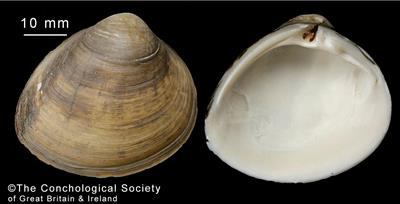The Gulf wedge clam (Rangea cuneate) is a native of the Gulf of Mexico but has been found in large numbers in the South Forty Foot Drain, which leads into the River Witham in Boston, Lincolnshire.
The discovery was made by Dr Martin Willing, Conservation Officer for the Conchological Society, while monitoring a rare mussel in the River Witham for conservation charity Buglife and Natural England. His findings are reported in the latest issue of the Journal of Conchology.
Mark Owen, Angling Trust’s Head of Freshwater, said: “It is very worrying that another new invasive non-native species has been discovered in this country. While the scientists work out exactly what the risk is to native fish species we are urging all anglers to be vigilant and carry out the ‘Check Clean Dry’ procedures, details of which can be found on the Angling Trust website.”

The procedures urge water users to thoroughly check, clean and dry equipment and clothing to help stop the spread of invasive non-native plants and animals.
The Gulf wedge clam is usually found in brackish (slightly salty) water but on this occasion they were in freshwater and up to 47mm in size, among the largest recorded in Europe.
Dr Willing believes the Lincolnshire population was probably established at least 5-6 years ago and may have been brought here as larvae in ballast water in ships, around the time boat navigation was restored to the South Forty Foot Drain after a break of 38 years.
Dr Sarah Henshall, Buglife’s Lead Ecologist, said: “These species could pose a potential threat to our native fresh and brackish water ecosystems. Gulf wedge clams grow quickly and once established can become the dominant species, crowding out native species and potentially changing the structure of the ecosystem and environment. In addition they may cause potentially adverse economic impacts, such as problems with water pipes.”










